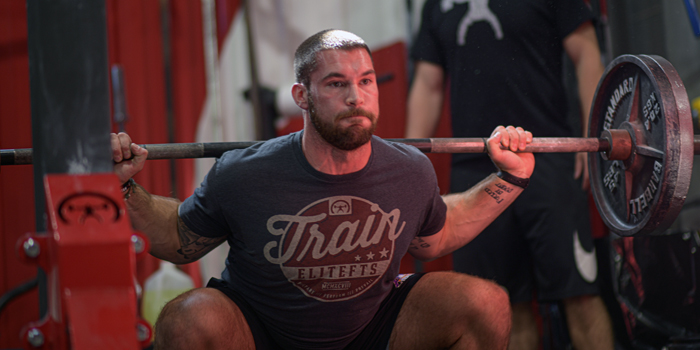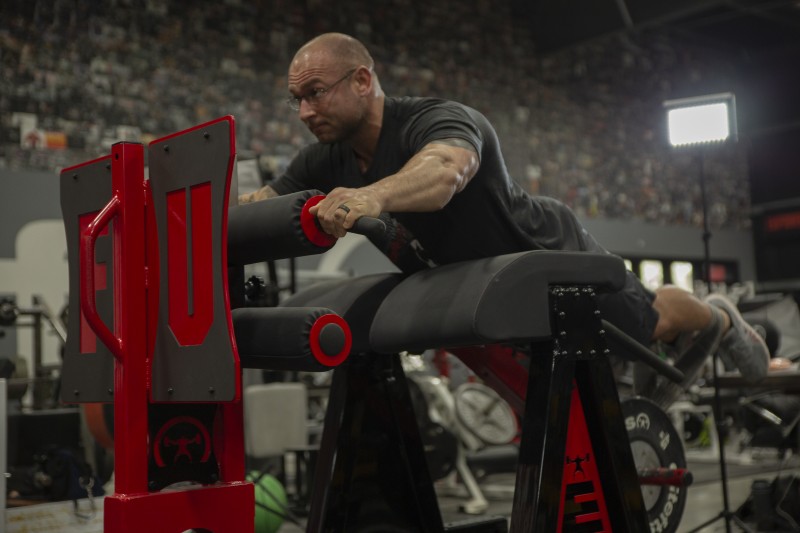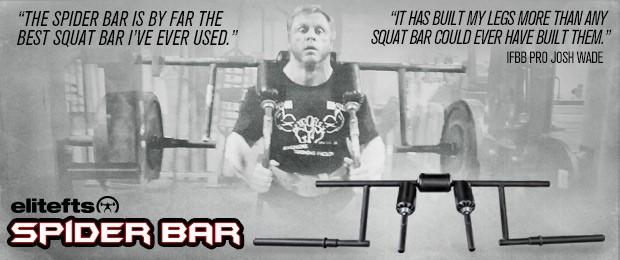
As I had spent the better part of the past several years training strength athletes and team sport athletes, it was quite a culture shock when it was time for me to accept the job as fitness director in the corporate wellness sector. In the simplest terms, corporate wellness is a term utilized by big businesses to describe the art of keeping your desk-restricted employees from dying so that you can increase productivity and make more money before their bodies or brains fail altogether. Well, at least that is the mindset I had going into the position. If we’re being completely transparent, I thought it would be a complete joke.
Slowly but surely, I have realized the impact that knowledgeable coaches in the field and I can have on people in this industry — not only on the productivity of the employees at a particular company but also on the quality of their health and lives overall.
The corporate world consists of working in large buildings, performing a job in a seated position, and little movement— unless it’s for a pee break, for the occasional meeting, or to eat one of the million junk food options that end up scattered around the cafeterias and break rooms. Noticing a trend? Keep in mind that my particular location involves financial services, app development, and a 24-7 call center, which translates to people working long, odd hours, running on crappy food and caffeine, and ultimately not sleeping or taking care of their bodies.
RECENT: 3 Things I Learned From Training My @ss Off with Dave Tate
If it’s starting to seem like an uphill battle, I can assure you that it is.
Herein lies the real question. What can you, I, or someone who finds himself or herself working with the corporate wellness population do with the monster of a task that we have been given? The answer is simple. Meet people where they’re at, get to work, and change some lives one person at a time.

olegdudko © 123rf.com
The Rise of the Desk Athlete
“Desk athlete” is a term that I have coined to describe corporate clientele. I utilize this term strategically. It is important for my clients to understand that although they may not be competing in a sport, they are part of a respective team. They each have a particular job to do, and their success in that job relies on their performance, including being at the top of their game mentally, physically, and emotionally. This simple name change allows them to see that their personal performance in life is predicated on the condition and health of their bodies.
By framing their current states in such a way, the “everyday aches and pains” become refocused. This population will merely suffer through chronic pain and have come to view it as “normal.” With this reframing, they begin to see how impactful the little things are; the choices they make can either add or subtract from their performance of their daily tasks. This reframing adds a certain level of professionalism that may not have been there or that has been forgotten.
How do you think this reframing went over with this population?
Would you be shocked at an overwhelming positive response? I was, too. A simple name change has also bled into influencing my staff’s beliefs and actions. This is a great way for you to instill a level of personal ownership of their daily actions and how it impacts the professional and lifestyle goals they have for themselves.
If you work in the corporate setting, give it a shot. Start instilling the “desk athlete” mentality, and watch how their demeanors change over the course of time.
Special Considerations/Common Complaints for Desk Athletes
Below is a list of the most common complaints and ailments of those who work at a desk all day.
A word to the wise for anyone in the corporate setting- make sure that you have a screening process in place. You will be dealing with people from all sides of the health spectrum, and you need to make sure that you are not working with someone with a health condition or something similar that has not been cleared by his or her physician.
Also, consider building a referral network. Referring out to a physical therapist or a doctor shows professionalism and maturity. Do not think that you can fix every “movement imbalance” or “glute firing problem” on your own. Get a second opinion. Bonus points if you have a physical therapist or physician in the wellness network or in the same building.
- Tight hip flexors
- Lower back pain
- Weak glute and hamstrings
- Kyphotic posture
- Wrist problems (grip issues may have developed due to carpal tunnel)
- Forward head position
- Shoulder pain
- Overall lack of mobility and athleticism
- Increased mortality
Training and Boosting Performance of the Desk Athlete
To get the most out of your desk athletes, it is important for you as the coach to meet them where they are. You cannot force higher demands on your clients that they are incapable of meeting or are not ready for.
RELATED: Hybrid Memberships are the New Normal
This is a reiteration of making damn well sure where this person is starting from, his or her baseline of movement ability, training history, and addressing his goals. The corporate world does not hire people based upon physical prowess, and it is your job to help each and every person who walks into your facility to improve. The majority of this will involve helping them to develop strong habits that lead them to living healthier lifestyles.
The To-Dos
Do get them to feel better LEAVING the gym than they did coming in. This is huge for newer and under-trained clients. You want the gym to be a positive place that they want to come back to.
Do get them a win on each and every session they have with you. Does your client want to have big guns and enjoys training arms? Make the last few minutes of each workout dedicated to that particular goal. It leaves the client feeling satisfied and happy with the whole workout.
Do focus on mobility, stability, then strength. Help your client to open up new functional ranges, stabilize those ranges by slowly adding load, then begin to work on building a base of foundational strength.
Do focus on the highest “return on investment” exercises and programming possible. Squat, hinge, row, press, carry. Throw in running and jumping, if they are able to do so in a safe way.
Do assess and reassess. (Corporate clients love data and feedback.) As important as it is to know where you are starting, you will also need to reassess your client to see if you are headed in the correct direction. This keeps accountability high and lets you add another win under the belt of the client.
Do work on joint mobility and core stiffness in each session. Sitting at a desk for hours a day causes the ball and socket joints to lose mobility and forces the spine into disadvantageous positions. A few rounds of the McGill Big 3 a day can go along way in building spinal and torso stiffness that helps to combat the seated position that these athletes find themselves in. Likewise, a little bit of mobility work with some corrective exercise goes a long way in helping to reduce pain and fatigue from their work environments and increase their quality of life.
Do educate them on how to feel better throughout the day. Just like with any other population, it is important to educate our clients on the importance of what they do outside of the gym in helping them to reach their goals and boost performance. Give them mobility and exercise goals to hit during the week so that they get the most bang for their buck when you are not around.
The Don’ts
Don’t beat them into the ground (soreness kills progress): For the desk athlete, being sore is the kiss of death. This population specifically hates being sore because it means that it makes movement and sitting uncomfortable. That is what they have to do all day, and you are making it very difficult to stay focused on their work. Not only that but also they won’t come back because only sickos reading elitefts would appreciate a good DOMS attack.
Don’t overcomplicate. Keep your anatomical terms to a minimum. Nobody is impressed, and you will definitely lose people if you are talking about their anterior pelvic tilts. If you cannot explain it simply then you do not know it.
Don’t forget the nutrition component. Make sure that you are connecting your clients with a nutritionist or with a registered dietician who can help them with their specific nutrition needs. If they aren’t fueling correctly, then we cannot help them to succeed.
Don’t forget to be their fan. You are their coach, but you are also their biggest fan and should be constantly reminding them that you are in their corners and want them to succeed. Some positive motivation and affirmations can go a long way in helping somebody to stick out a tough workout.

Training Program Example
Below is an example of a training week of one of my middle-of-the-road desk athletes at my facility. This client meets with me twice a week and is looking to improve his body composition and to reduce the pain in his lower back that he gets from sitting all day. This program structure was taken from Alwyn Cosgrove and his Results Fitness Team. No need to reinvent the wheel right? These sessions last between 30-40 minutes.
Session 1
- 5-Minute Treadmill Walk incline
- Front Plank 2x20 seconds
- Side Plank 2x20 seconds
- Bird Dog 2x5 each side
- Goblet Squat 3x8
- TRX Row 3x12
- TSpine Rotation 3x8 each
- Single Leg RDL 3x8 each
- Push Up 3x12
- Banded Clam Shell 3x12 each side
Session 2
- 5-Minute Elliptical
- Front Plank 2x20 seconds
- Side Plank 2x20 seconds
- Bird Dog 2x5 each side
- KB Deadlift 3x8
- One Arm DB Bench 3x12 each
- Hip Airplane 3x8 each
- Walking Lunge 3x8 each leg
- Chest Supported Row 3x12
- Single-Arm Farmers Walk 3x100 feet each arm
So, there you have it. This is just a quick synopsis of how you should go about training the corporate “desk athlete.” This is a population that really needs the help of talented strength coaches and professionals to help them to break their bad habits and to build healthier and more productive ones. It is up to you to get the most out of this population. If you have any questions about training or coaching, feel free to reach out, and I will be glad to give you my two cents regarding the situation.
References
- Van Uffelen JG, Wong J, Chau JY, Van der Ploeg HP, Riphagen I, Gilson ND, Burton NW, Healy GN, Thorp AA, Clark BK, Gardiner PA, Dunstan DW, Bauman A, Owen N, Brown WJ. Am J Prev Med. 2010 Oct;39(4):379-88. doi: 10.1016/j.amepre.2010.05.024. Review. Occupational sitting and health risks: a systematic review.










